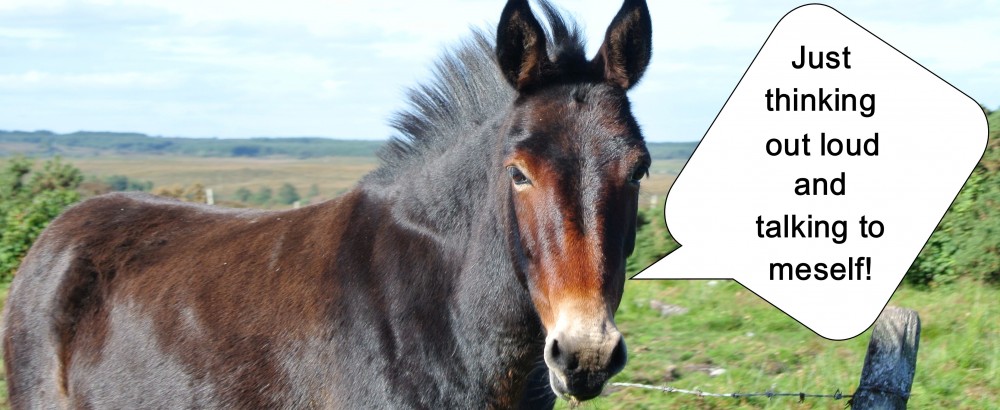
Mona, The Body in the Bog, my current book, is available on Amazon and Kindle.
Stephen King has nothing to worry about. Here’s my first ever attempt at writing a book.
Though the story begins with two male warriors, it really is about two women; one lives in ancient Celtic Ireland, and the other lives in the present.
Here is the introduction to my ancient Celtic murder mystery and love story.
Prologue
Never before had he seen the symbol of the triune goddess on anyone else but his wife and himself. Now, lying on the beach here before him lay a defeated Fir Bolg with the same symbol dangling from his neck; three intertwined silver leaves glittering in the golden, sinking sunlight.
A hand reached up to touch his tunic. The sun blinding the fallen warrior’s eyes, the figure standing before the Fir Bolg warrior now a black silhouette, in stark contrast to the brightness surrounding him.
Behind the wounded Fir Bolg warrior, the waves rolled in, crashing against his back, knocking him off balance. Again his hand reached for the tunic, but slipped, grabbing the checkered braccae that stuck to the Irish Celt’s legs with each crashing wave that broke against his muscular calves.
The spear was a thin wooden shaft, its iron point projecting at an angle, making it ready for a downward stab, a fearsome threat to the Fir Bolg laying half raised on his left arm as he lay, helpless and defeated on the pebbled beach.
The spear remained aloft, ready to strike at any moment, instilling fear into the Fir Bolg, yet he refused to show it. None of the warriors from his Belgae tribe were trained to die showing pain. Alone on the beach, here and now, with his Irish enemy before him, he struggled to hide his fear of death; the silhouette of his enemy looming above him, like a lightning bolt, ready to strike at any moment
The warrior on the sand was a Fir Bolg, a Celt from northern mainland Europe, young and fierce. Although he had dealt vicious blows with his sword toward the Irish Celt now standing before him, the Fir Bolg warrior did not give up easily.
His outstretched hand now grasping the braccae of his Irish enemy, not a threatening move, the Irish Celt could see that the Fir Bolg was weak. The attempt to invade Ireland’s shores from the south of the island had failed for the Fir Bolg. The Irish had defended their shores successfully, this time.
The Irish Celt moved forward, extending his hand to the warrior. Although at least ten years older than his Fir Bolg counterpart, they had fought a fair battle, and now one would leave a victor and the other would die.
The outstretched hand grabbed the wrist of the Fir Bolg. Blood streamed down the Fir Bolg’s forearm, when it hit his elbow it dripped furiously to the sand, staining it a deep red.
Believing that his enemy would perish on the beach, the Irish man prepared himself for the final stab of the Fir Bolg. He lifted his foot from the sand, resting it on the defeated warrior’s left shoulder, then shoving down with his foot. The Fir Bolg felt himself press into the wet sand, now feeling hard, like stone. The Irish Celt threw his spear aside and his right hand reached to the scabbard at his left, withdrawing a small sword with a wide blade.
The Irish warrior dropped to his knees and grabbed the long, blond, wet hair of the Fir Bolg Celt. Grabbing the sword even tighter, the Irish Celt pulled the hair back with his left hand and positioned the sharp blade of his sword below the area of the Fir Bolg’s neck, where the beard hairs were short and the skin was smooth.
His blade began to apply pressure to the skin and a trickle of blood appeared, dribbling over the silver triune goddess symbol, sparkling in the sun, silver and blood. The Fir Bolg wore the same triune goddess symbol around his neck as the Irish Celt, Diarmuid, wore on his wrist.
Easing the pressure of the sword, he looked at his wrist, the enormous hand softening its hold on the sword. The leather strap was blood stained, but the symbol of the triune goddess shone in the sunlight. He had never seen anyone else wear this symbol, only his own wife, Etain. It was she who had given it to him.
The Irish Celt removed the sword and shifted his grip from the Fir Bolg’s hair to the cloth at the front of his chest. The Fir Bolg felt himself pulled to standing. They stood, face to face, and the Irish Celt spoke in a tongue similar to the Fir Bolg warrior’s own language.
“My wife reveres all life. Today I have killed my last man. If I spare you it is because of this,” he shook the wristlet on his left arm. “Birth, Life and Death, do you understand?”
The Fir Bolg nodded. He recognized the wristlet, three intertwined leaf symbols. The Irish Celt took a step backwards, he stretched out his hand and placed it on the Fir Bolg’s left shoulder, “Live,” he said, “Today you will live!” Then he stepped away, turning towards the mainland, and disappearing into the forest.
The Fir Bolg watched his enemy walked away, then he collapsed back into the damp cold sand and semi-consciousness on the cold shores of Cork in the south of Ireland.
In sixteen years the two men would meet again, but only one would be spared.













